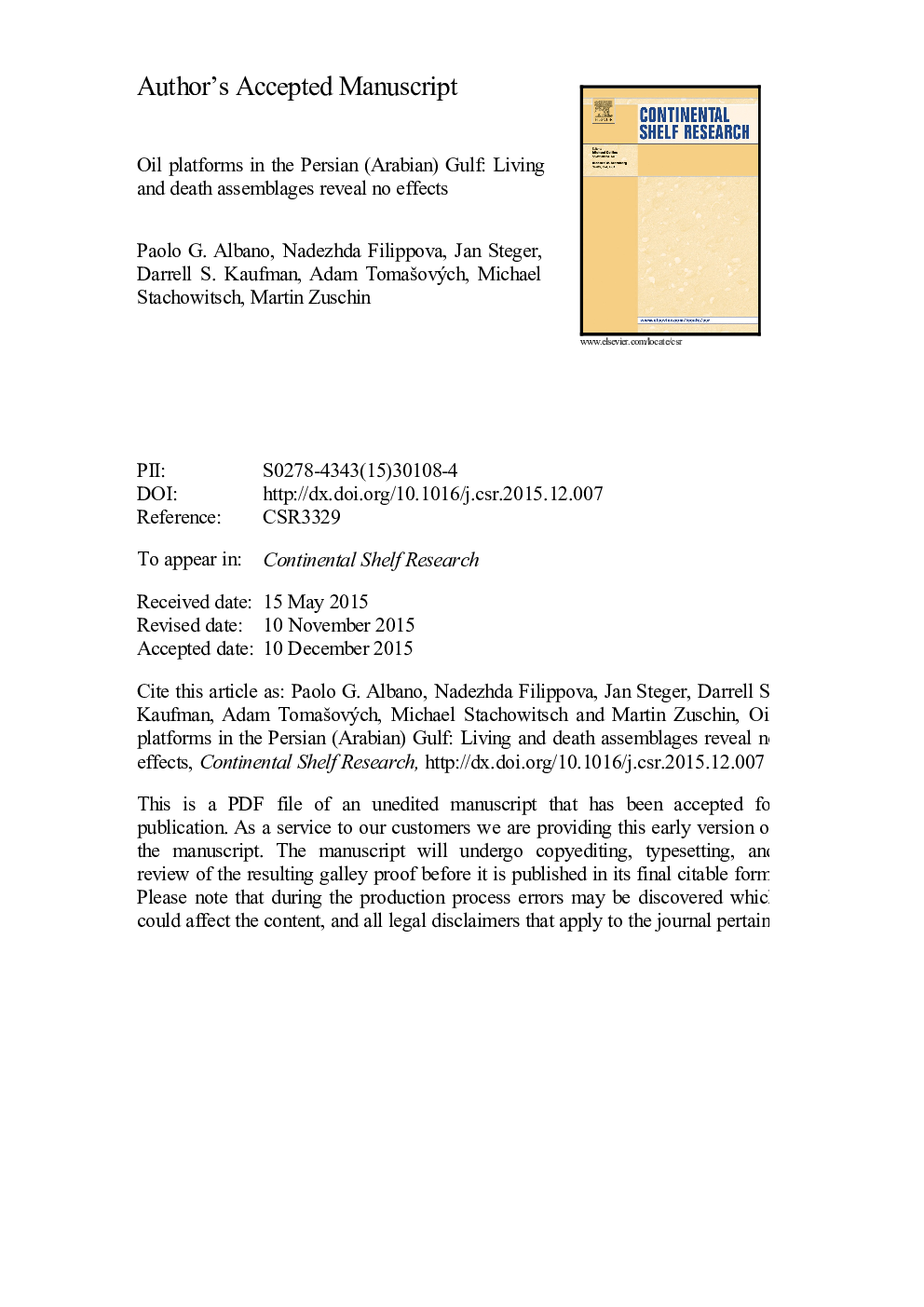| کد مقاله | کد نشریه | سال انتشار | مقاله انگلیسی | نسخه تمام متن |
|---|---|---|---|---|
| 6382922 | 1626092 | 2016 | 29 صفحه PDF | دانلود رایگان |
عنوان انگلیسی مقاله ISI
Oil platforms in the Persian (Arabian) Gulf: Living and death assemblages reveal no effects
ترجمه فارسی عنوان
سیستم های نفتی در خلیج فارس: مجموعه های زندگی و مرگ هیچ اثری ندارند
دانلود مقاله + سفارش ترجمه
دانلود مقاله ISI انگلیسی
رایگان برای ایرانیان
موضوعات مرتبط
مهندسی و علوم پایه
علوم زمین و سیارات
زمین شناسی
چکیده انگلیسی
Environmental impact assessments require pre-impact data to discriminate between natural and anthropogenic sources of community shifts. True pre-impact data, however, are rarely available because the onset of ocean biomonitoring in the 20th century frequently postdates the timing of such shifts. Death assemblages (DAs) sampled on a sea-floor capture previous community states and represent archives of past pre-impact conditions. This is because they change more slowly (10-10,000 years) than the corresponding living assemblage (LA) (yearly scales of turnover). Strong and rapid directional changes such as those due to human activities are therefore not immediately captured by DAs, leading to a greater live-dead (LD) mismatch than under natural processes alone. We used this approach to infer disturbance of benthic habitats around platforms in two major oilfields in the Persian (Arabian) Gulf: Umm Al Dalkh (UA) and Zakum (ZK). We found that, first, LD metrics showed no correlation with contamination levels or distance from the platform. Second, although LAs and DAs significantly differed in species composition and did not overlap in multivariate space, the difference was generated by a single species, the semelid deposit-feeding bivalve Ervilia purpurea. This bivalve was not found alive, but constituted 30-50% of the DAs at the field scale and up to 92% at some stations. Radiocarbon-calibrated amino acid racemization dating of valves of this species showed considerable spatial and temporal heterogeneity in production over the last decades and centuries, implying a boom-and-bust population dynamics; its absence in LAs is thus likely unrelated to the onset of oil platform production in the 20th century. The remaining LD differences probably reflect within- and multiple-habitat temporal or spatial averaging, and taxonomic similarity and rank-order agreement in species abundance at the field scale are comparable with values recorded in pristine areas. Therefore, we found no evidence of major community shifts in this oilfield area.
ناشر
Database: Elsevier - ScienceDirect (ساینس دایرکت)
Journal: Continental Shelf Research - Volume 121, 15 June 2016, Pages 21-34
Journal: Continental Shelf Research - Volume 121, 15 June 2016, Pages 21-34
نویسندگان
Paolo G. Albano, Nadezhda Filippova, Jan Steger, Darrell S. Kaufman, Adam Tomašových, Michael Stachowitsch, Martin Zuschin,
